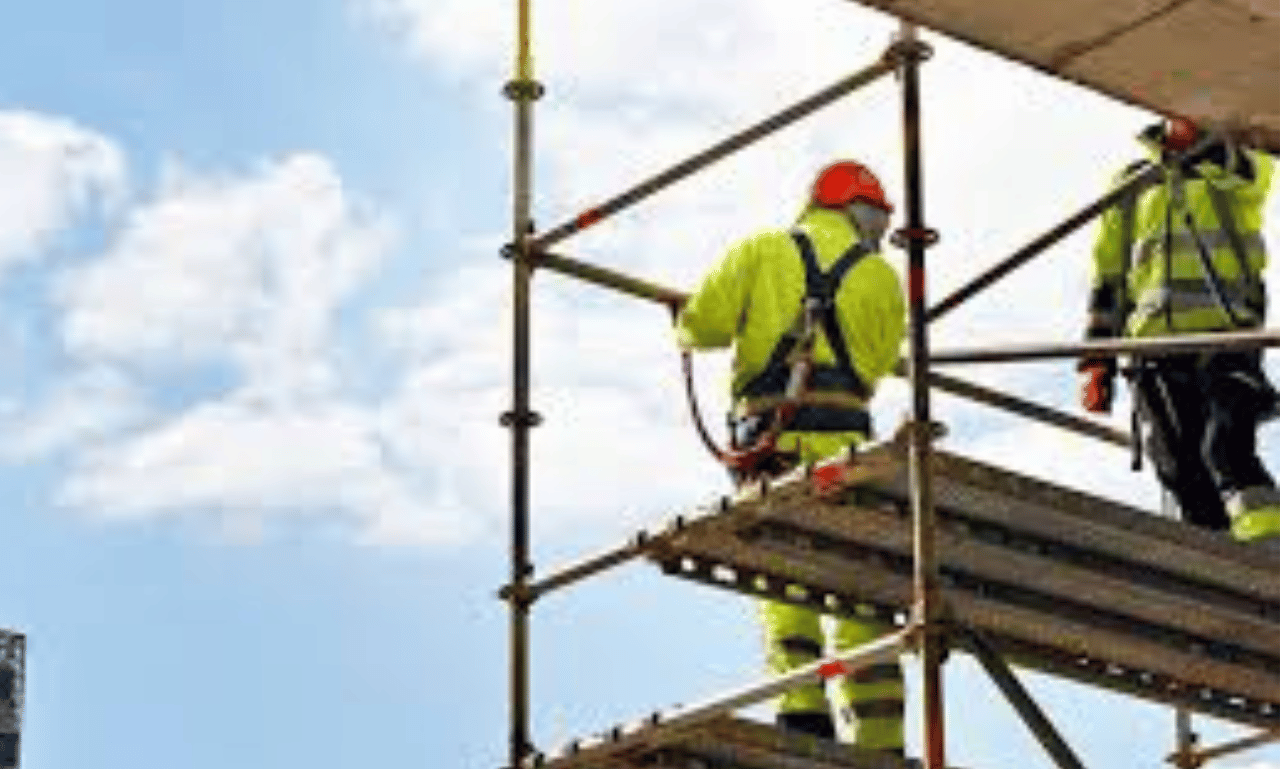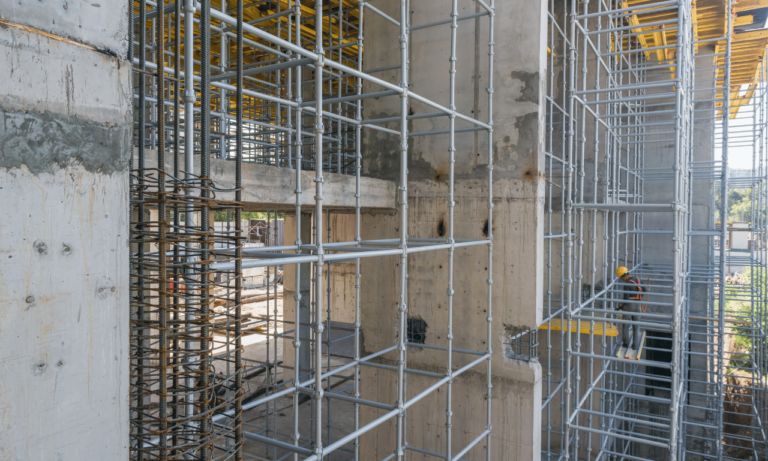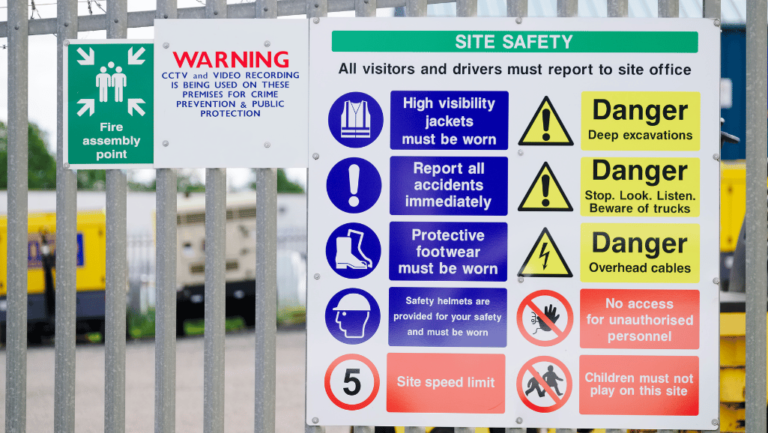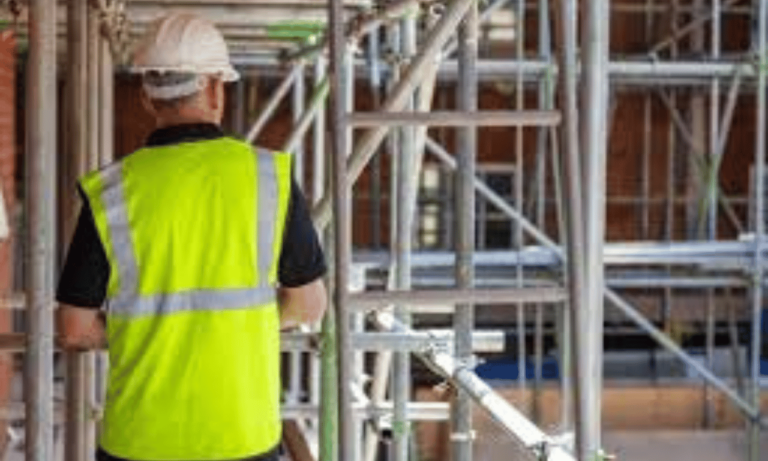Phone:
(+65)8319-0742
When it comes to construction projects, safety and hazard management are of utmost importance. To ensure compliance with OSHA regulations and promote site safety, it is essential to have Scaffold Competent Persons on the team. These individuals undergo specific training to equip them with the knowledge and skills needed to identify and mitigate hazards effectively.
In this article, we will explore the essential training requirements for becoming a Scaffold Competent Person, the importance of scaffold safety training, and the key components of the certification process. We will also delve into the responsibilities of Scaffold Competent Persons in scaffold inspection, maintenance, and hazard management.
Key Takeaways:
- Scaffold Competent Person training ensures compliance with OSHA regulations.
- Site safety is improved with the presence of Scaffold Competent Persons on construction projects.
- Proper hazard management is crucial for maintaining a safe working environment.
- Scaffold Competent Persons play a critical role in scaffold inspection and maintenance.
- Effective hazard management reduces accidents and improves overall construction site safety.
Understanding OSHA Requirements for Scaffold Competent Person Training
In the construction industry, ensuring the safety and well-being of workers is of utmost importance. To achieve this, strict regulations and standards are in place, guided by the Occupational Safety and Health Administration (OSHA). For individuals aspiring to become Scaffold Competent Persons, understanding the OSHA requirements for training is essential.
OSHA sets forth specific guidelines that must be followed to ensure compliance with construction site regulations. Scaffold Competent Person training is designed to equip individuals with the knowledge and skills needed to supervise and manage scaffold-related activities safely. By adhering to OSHA requirements, construction sites can minimize the risk of accidents and create a secure working environment.
One of the primary OSHA requirements for Scaffold Competent Person training is that it must cover essential topics related to scaffold erection, use, dismantling, inspection, and hazards associated with scaffolding. Training programs should also include information on fall protection measures, scaffold design, load capacities, and proper equipment use.
Scaffold Competent Person training should be conducted by qualified instructors who are well-versed in OSHA regulations and construction site safety. These instructors must have extensive knowledge and experience in the field to ensure that the training meets the necessary standards.
During the training, participants learn how to identify and assess potential hazards associated with scaffolding, implement control measures, and effectively communicate site safety requirements to workers. They also gain insights into the proper inspection and maintenance of scaffolding systems and learn to recognize signs of potential structural issues or damage.
By completing Scaffold Competent Person training that meets OSHA requirements, individuals can confidently assume the responsibilities of a Competent Person, promoting workplace safety and comprehensive hazard management. Employers can also rest assured that their construction projects are compliant with the necessary regulations, reducing the risk of accidents and injuries.
Importance of Scaffold Safety Training for Scaffold Competent Persons
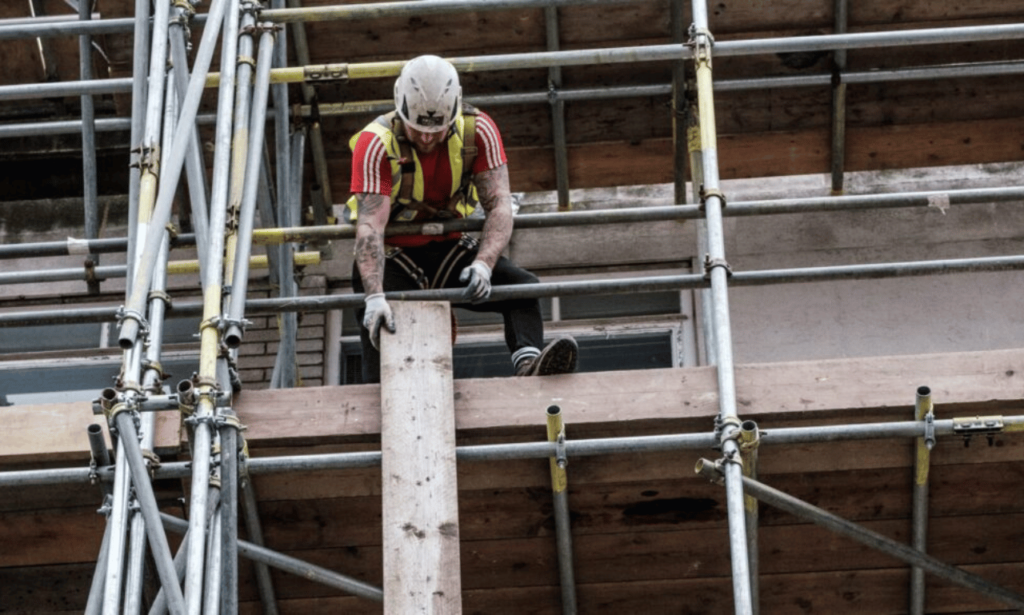
Scaffold safety training is of utmost importance for Scaffold Competent Persons, as it equips them with the necessary knowledge and skills to ensure workplace safety standards are met, hazard identification is effectively performed, and fall protection measures are implemented.
With comprehensive scaffold safety training, Scaffold Competent Persons develop a deep understanding of the potential hazards associated with scaffolding. They are trained to identify common risks such as unstable platforms, inadequate guardrails, and improper use of personal protective equipment.
This training empowers Scaffold Competent Persons to take proactive measures in mitigating these hazards, minimizing the risk of accidents and injuries on construction sites. By implementing proper fall protection measures, such as harnesses, guardrails, and toe boards, Scaffold Competent Persons help prevent falls, which are a leading cause of injuries in the construction industry.
Furthermore, scaffold safety training ensures that Scaffold Competent Persons adhere to workplace safety standards set forth by regulatory bodies. They learn about the relevant OSHA regulations and guidelines, enabling them to establish a culture of safety and compliance within their construction teams.
Through scaffold safety training, Scaffold Competent Persons become proficient in hazard identification. They understand how to conduct regular inspections of scaffolding structures, identifying potential dangers such as damaged or worn-out components, inadequate bracing or anchoring, or uneven ground conditions. This proactive approach ensures that hazards are addressed promptly, minimizing the likelihood of accidents or structural failures.
In conclusion, scaffold safety training plays a vital role in equipping Scaffold Competent Persons with the necessary skills to ensure workplace safety, effectively manage hazards, and implement fall protection measures. By investing in this training, construction companies can create a safer working environment, reduce the risk of accidents, and promote a culture of compliance with workplace safety standards.
Key Components of Scaffold Competent Person Certification
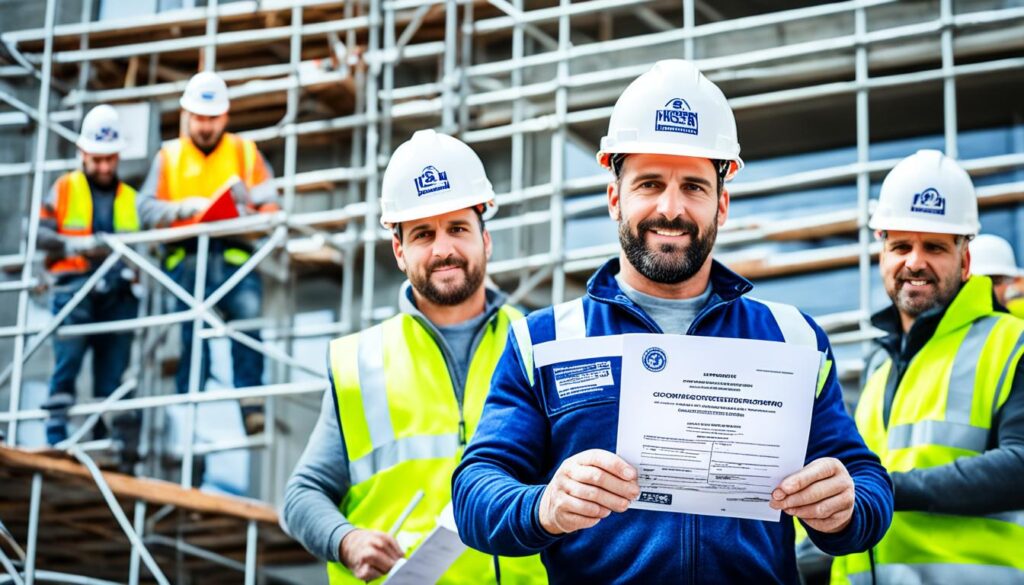
To become a Scaffold Competent Person, individuals must undergo comprehensive training and complete various components that are crucial for obtaining the certification. These key components ensure that individuals have the necessary knowledge and skills to ensure OSHA compliance and promote site safety on construction projects.
Training Modules
The training modules form the foundation of Scaffold Competent Person certification. These modules cover a wide range of topics, including scaffold design, erection, dismantling, inspection, and hazard identification. Participants learn about OSHA regulations, workplace safety standards, and fall protection measures. Through interactive sessions, hands-on exercises, and real-world case studies, individuals gain a deep understanding of scaffold safety principles and best practices.
Assessments
To gauge the participants’ understanding and ensure their competency, assessments are conducted at various stages of the training. These assessments may consist of written tests, practical demonstrations, and scenario-based evaluations. By evaluating their knowledge and application of scaffold safety principles, the assessments enable trainers to identify areas that require further reinforcement and support.
Practical Evaluations
In addition to theoretical knowledge, Scaffold Competent Person certification also requires individuals to demonstrate their practical skills in scaffold inspection and hazard management. This involves conducting scaffold inspections under the guidance of experienced trainers and identifying potential hazards. Participants learn how to assess the integrity of scaffolds, check for proper rigging, and ensure compliance with safety regulations. Practical evaluations provide individuals with hands-on experience and instill confidence in their ability to carry out their responsibilities as Scaffold Competent Persons.
| Key Components | Description |
|---|---|
| Training Modules | Comprehensive training on scaffold design, erection, dismantling, inspection, and hazard identification. |
| Assessments | Evaluation of participants’ understanding and competency through written tests, practical demonstrations, and scenario-based evaluations. |
| Practical Evaluations | Demonstration of practical skills in scaffold inspection and hazard management under the guidance of experienced trainers. |
Scaffold Inspection and Maintenance for Competent Persons
In this section, we will focus on the crucial role of Scaffold Competent Persons in ensuring the safety and integrity of scaffolds through thorough inspection and proactive maintenance. Scaffold inspection and maintenance are essential components of construction site safety and hazard management, as they help identify potential risks and prevent accidents.
Scaffold inspection is a systematic process carried out by Scaffold Competent Persons to assess the condition and stability of scaffolding structures. Their expertise allows them to identify any signs of damage, weakness, or deterioration that may pose hazards to workers. By conducting regular inspections, Scaffold Competent Persons can detect issues early on and take the necessary steps to rectify them promptly.
During scaffold inspections, Scaffold Competent Persons thoroughly examine various elements, including:
- Scaffold components, such as frames, braces, platforms, and guardrails, ensuring they are properly installed and in good condition.
- Anchorage points and tie-offs to ensure their reliability and adherence to safety standards.
- Connections and couplers for stability, looking for any signs of corrosion, wear, or other damage.
- Planking and decking for strength, proper positioning, and adequate load-bearing capacity.
Scaffold maintenance involves addressing any identified issues promptly and effectively to ensure the continued safety and functionality of scaffolds. Scaffold Competent Persons play a critical role in coordinating the necessary repairs, replacements, or modifications to mitigate hazards and maintain compliance with construction site safety regulations.
Effective scaffold maintenance includes:
- Performing routine cleaning to remove debris or hazardous materials.
- Repairing or replacing damaged components, such as frames, planks, or guardrails.
- Ensuring proper anchorage and stability of the scaffold.
- Monitoring and maintaining proper access points, including stairs and ladders.
- Regularly inspecting and testing safety equipment, such as harnesses and lifelines, to guarantee their functionality.
By prioritizing scaffold inspection and maintenance, Scaffold Competent Persons contribute to a safer working environment, reduce the risk of accidents, and uphold construction site safety standards. Their expertise in hazard identification and proactive maintenance ensures that scaffolding structures remain structurally sound and fit for use throughout construction projects.
Effective Hazard Management for Scaffold Competent Persons
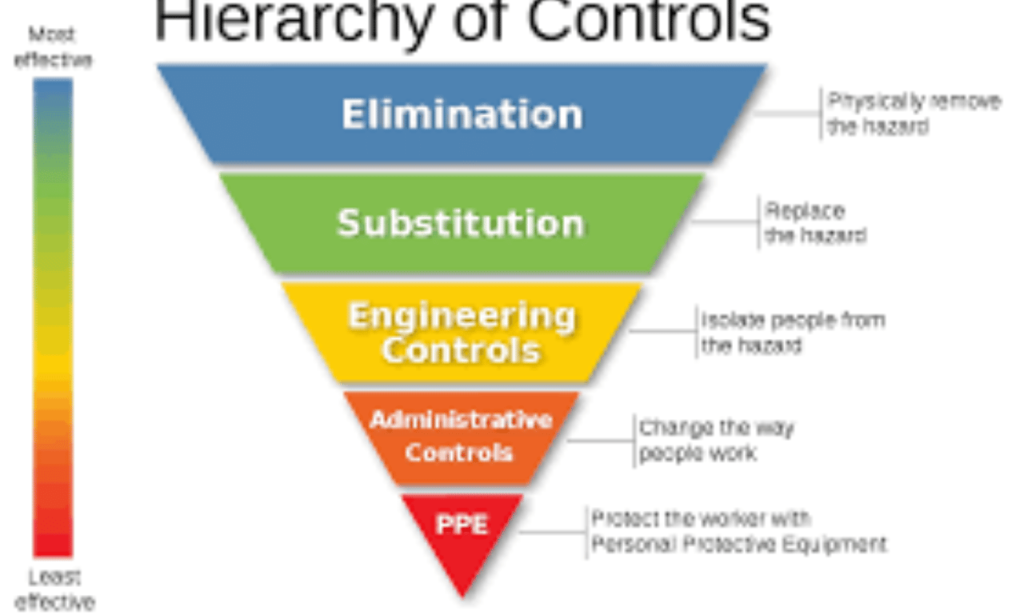
Scaffold Competent Persons play a crucial role in ensuring construction site safety through effective hazard management. By utilizing proven strategies and techniques, these individuals are able to identify and mitigate potential hazards, minimizing the risk of accidents and injuries. In this section, we will explore the various methods Scaffold Competent Persons employ to maintain a safe working environment.
Proactive Risk Assessments
One of the key responsibilities of a Scaffold Competent Person is to conduct proactive risk assessments. By systematically evaluating the work area, identifying potential hazards, and assessing the level of risk involved, these individuals can implement appropriate control measures to mitigate or eliminate the identified hazards. This proactive approach to hazard management ensures that safety measures are in place before work begins, reducing the likelihood of accidents and ensuring the well-being of all workers.
Hazard Control Measures
Implementing effective hazard control measures is essential for Scaffold Competent Persons. These measures include but are not limited to securing scaffolds properly, ensuring stable footing, and providing adequate fall protection systems. By following construction site safety standards and guidelines, Scaffold Competent Persons can create a safe working environment where hazards are effectively managed and controlled. Regular inspections and maintenance of scaffolds also play a vital role in hazard control, as any potential issues can be identified and resolved promptly.
Ongoing Monitoring
Continuous monitoring is a crucial aspect of hazard management for Scaffold Competent Persons. They must stay vigilant and observant throughout the construction project, ensuring that safety protocols are being followed and hazards are mitigated. Scaffold Competent Persons should conduct regular inspections, assess the effectiveness of control measures, and address any emerging issues promptly. Ongoing monitoring not only helps maintain a safe working environment but also enables quick responses to unforeseen hazards or changes in work conditions.
| Hazard Management Techniques | Benefits |
|---|---|
| Proactive risk assessments | Identify potential hazards early and implement appropriate control measures |
| Hazard control measures | Create a safe working environment and minimize the risk of accidents |
| Ongoing monitoring | Maintain safety standards and address emerging hazards promptly |
Benefits of Scaffold Competent Person Training for Construction Projects
When it comes to construction projects, ensuring site safety and hazard management is of paramount importance. This is where Scaffold Competent Person training can make a significant difference. By equipping individuals with the necessary knowledge and skills, this training contributes to improved safety practices, reduced accidents, and increased compliance with OSHA regulations.
Enhanced Site Safety
Scaffold Competent Person training plays a vital role in promoting site safety on construction projects. Participants learn about the potential hazards associated with working at heights and gain a comprehensive understanding of safety protocols. With this knowledge, they are better equipped to identify potential risks, implement preventive measures, and maintain a secure working environment for all workers.
Effective Hazard Management
Effective hazard management is key to minimizing accidents and injuries on construction sites. Scaffold Competent Person training provides individuals with the skills to recognize and address hazards promptly. Participants learn how to conduct thorough risk assessments, identify potential issues, and implement appropriate control measures. By focusing on hazard management, Scaffold Competent Persons create a safer working environment for everyone on the construction site.
Reduced Accidents and Incidents
Accidents and incidents can result in delays, injuries, and costly interruptions to construction projects. Scaffold Competent Person training helps mitigate these risks by educating individuals on proper procedures for scaffold installation, use, and dismantling. With enhanced knowledge and skills in scaffold safety, competent persons can effectively prevent accidents, reducing the number of incidents on construction sites.
Compliance with OSHA Regulations
Meeting OSHA compliance requirements is essential for construction projects. Scaffold Competent Person training ensures that participants understand and comply with the relevant OSHA regulations. This includes knowledge of scaffold design criteria, load capacity, access requirements, and fall protection measures. By adhering to these regulations, construction projects can avoid penalties, maintain a positive safety culture, and protect the well-being of workers.
| Benefits | Description |
|---|---|
| Enhanced Site Safety | Scaffold Competent Person training promotes a safer working environment by educating participants about potential hazards and safety protocols. |
| Effective Hazard Management | Competent Persons equipped with hazard management skills can promptly identify and address potential risks on construction sites. |
| Reduced Accidents and Incidents | Proper scaffold safety procedures taught in the training contribute to a decrease in accidents and incidents on construction projects. |
| Compliance with OSHA Regulations | Scaffold Competent Person training ensures compliance with OSHA regulations, preventing penalties and promoting a positive safety culture. |
Conclusion
In conclusion, Scaffold Competent Person training is an essential requirement for individuals in the construction industry. This training plays a vital role in ensuring compliance with OSHA regulations, promoting site safety, and effectively managing hazards on construction projects. By equipping individuals with the necessary knowledge and skills, Scaffold Competent Person training helps create a safer working environment for all construction workers.
Through this training, individuals gain a deep understanding of the specific requirements and standards set by OSHA. They learn how to identify and mitigate potential hazards, implement proper fall protection measures, and adhere to workplace safety standards. By doing so, Scaffold Competent Persons contribute to reducing accidents and injuries in the construction industry.
Scaffold Competent Person training also encompasses crucial aspects such as scaffold inspection and maintenance. Scaffold Competent Persons are responsible for ensuring the structural integrity of scaffolds, identifying potential hazards, and implementing timely repairs or replacements. Their proactive approach to hazard management helps maintain a safe working environment, preventing accidents and ensuring the overall success of construction projects.
FAQ
What is Scaffold Competent Person training?
Scaffold Competent Person training is specialized training that equips individuals with the knowledge and skills necessary to oversee and ensure the safety of scaffold systems on construction sites. This training helps individuals understand OSHA regulations, identify hazards, implement fall protection measures, and properly inspect and maintain scaffolds.
Who needs Scaffold Competent Person training?
Scaffold Competent Person training is typically required for individuals who are responsible for overseeing scaffold systems on construction sites. This includes supervisors, project managers, and other personnel who are involved in the construction, inspection, maintenance, and dismantling of scaffolds.
What are the OSHA requirements for Scaffold Competent Person training?
OSHA requires that Scaffold Competent Persons receive appropriate training that covers the specific requirements of scaffold safety. This includes training on identifying and addressing hazards, fall protection measures, scaffold assembly and disassembly, and scaffold inspection and maintenance. The training must be delivered by a qualified instructor and must include both theoretical and practical components.
How often should Scaffold Competent Persons be trained?
OSHA does not specify a specific time frame for retraining Scaffold Competent Persons. However, it is recommended that individuals receive refresher training every few years or whenever there are significant changes in scaffold regulations, equipment, or work practices. Regular training ensures that Scaffold Competent Persons stay updated on the latest industry standards and best practices.
What are the responsibilities of a Scaffold Competent Person?
The responsibilities of a Scaffold Competent Person include conducting scaffold inspections, ensuring the proper erection and dismantling of scaffolds, identifying and addressing hazards, implementing fall protection measures, managing scaffold maintenance, and supervising scaffold-related activities on construction sites. They are also responsible for ensuring compliance with OSHA regulations and promoting a safe working environment.
How long does Scaffold Competent Person training typically take to complete?
The duration of Scaffold Competent Person training can vary depending on the training provider and the specific course curriculum. Generally, the training can range from one to five days, including both classroom instruction and hands-on practical exercises. It is essential to choose a reputable training provider that offers comprehensive and relevant training to ensure competency in scaffold safety.
Can Scaffold Competent Person training be conducted online?
Yes, Scaffold Competent Person training can be conducted online. However, it is crucial to ensure that the online training course meets all the necessary OSHA requirements and provides hands-on practical exercises to develop the required skills. Individuals pursuing online training should also have access to a qualified instructor or trainer who can provide guidance and support throughout the training process.
What are the consequences of not having a Scaffold Competent Person on a construction site?
Not having a Scaffold Competent Person on a construction site can pose significant risks to the safety of workers. It may lead to improper scaffold assembly, lack of hazard identification and mitigation, inadequate fall protection measures, and insufficient scaffold inspection and maintenance. This can result in accidents, injuries, and even fatalities. Additionally, non-compliance with OSHA regulations can lead to penalties and legal consequences for the construction company.

